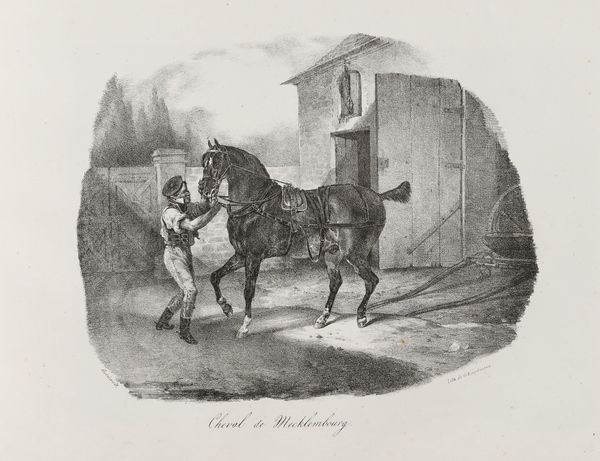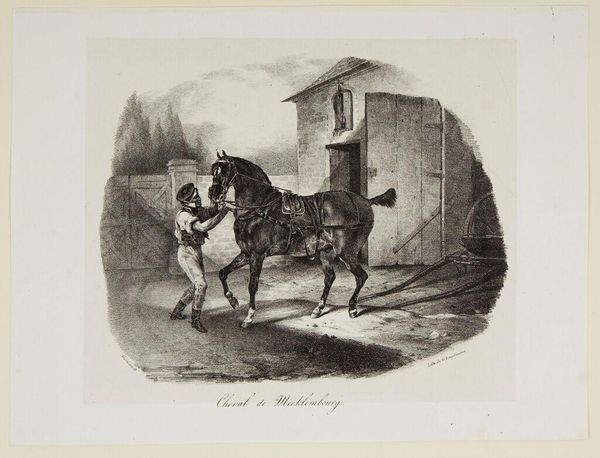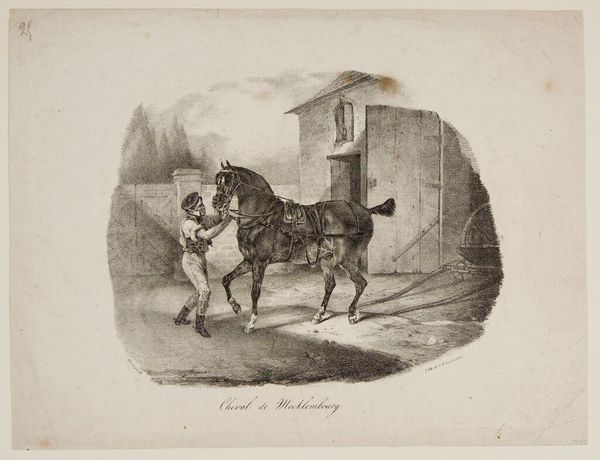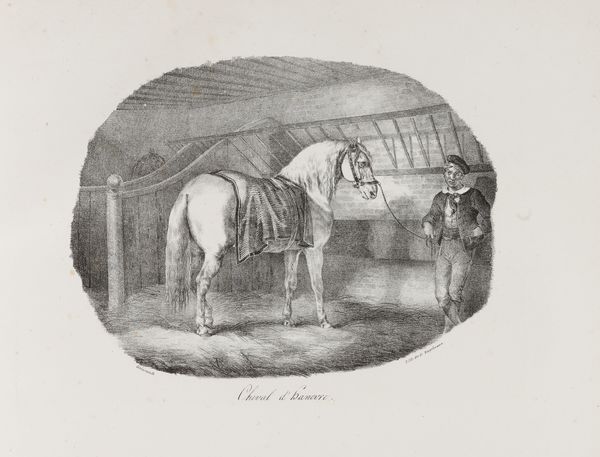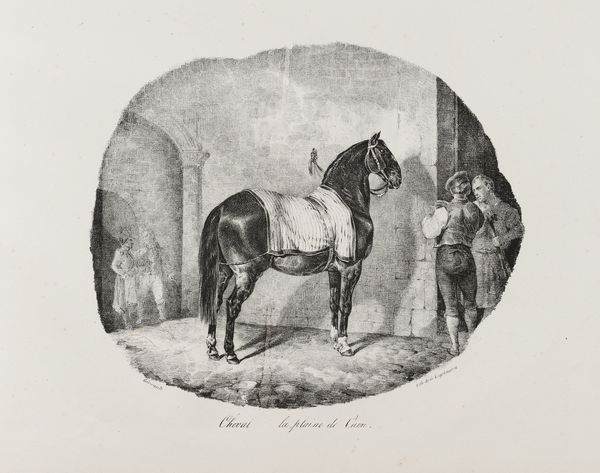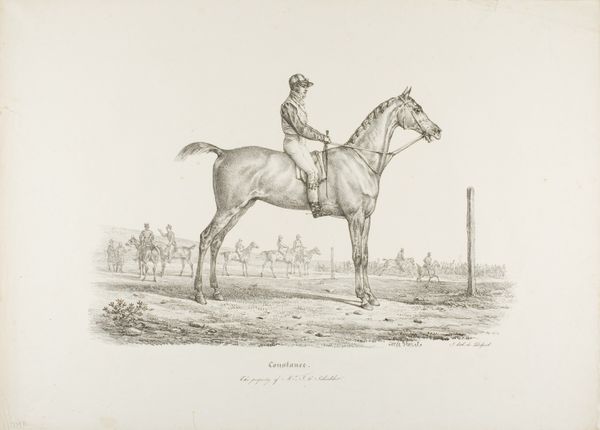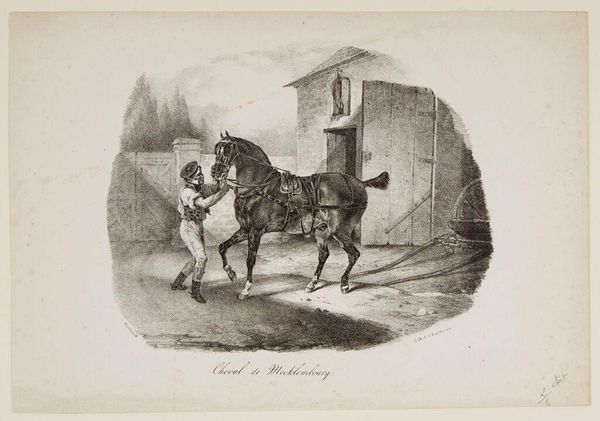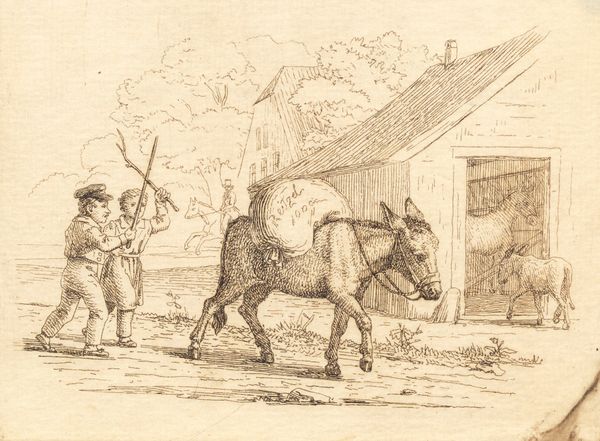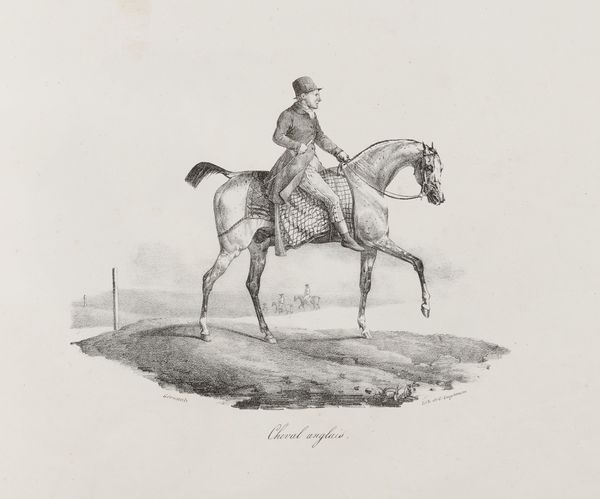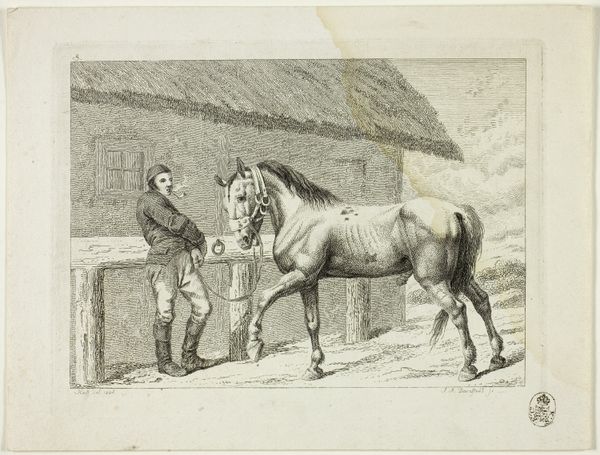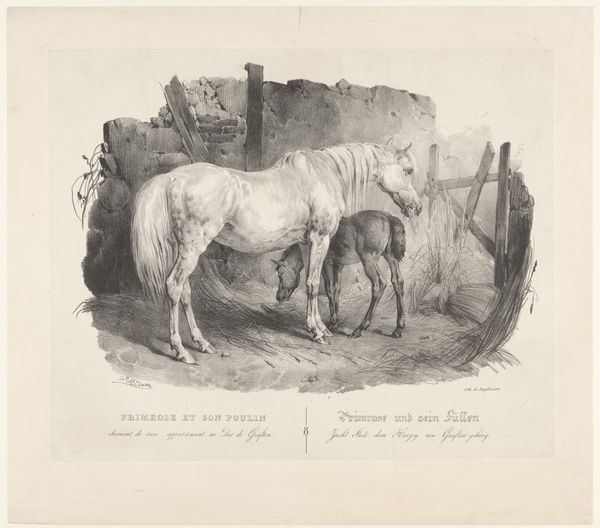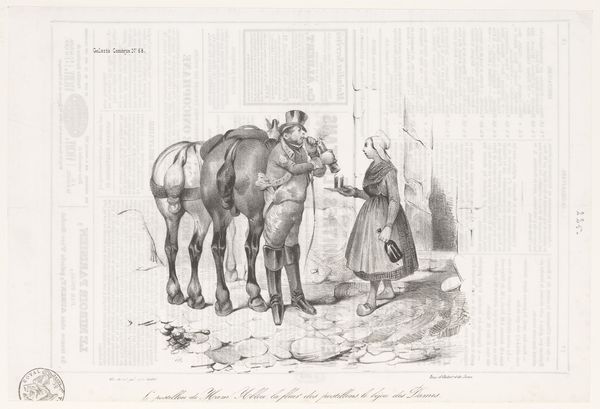
drawing, lithograph, print, graphite
#
drawing
#
lithograph
# print
#
landscape
#
romanticism
#
graphite
#
genre-painting
Dimensions: 7 3/4 x 9 1/4 in. (19.69 x 23.5 cm) (image)
Copyright: Public Domain
Curator: What a beautiful study of equine anatomy! This is "Cheval de Mecklembourg," or "Mecklenburg Horse," a lithograph dating to 1822 by Théodore Géricault. Editor: It strikes me immediately as an image steeped in tradition, but not in a stale way. There's something undeniably poignant about the man's careful handling of the horse, suggesting respect, maybe even tenderness. Curator: Absolutely. It's an intriguing piece because it sits at the crossroads of Romanticism’s fascination with the natural world and a burgeoning interest in Realism. Lithography democratized image production in the 19th century, allowing for wider dissemination of art. Géricault played a key role. Editor: Let's delve into the symbolism. The horse, of course, has always represented power, virility, freedom... but what specific layers are we dealing with here? This isn't a wild stallion; it's clearly a working animal, yet rendered with remarkable grace. Curator: Contextually, Mecklenburg horses were known for their strength and stamina. So Géricault presents us with the "everyday" horse – a working animal – elevating it through his art. This was also the time after the Napoleonic wars. So one way of reading the piece is a reflection on labor, rebuilding. Editor: I can also’t help but notice the very ordinary stable in the background; there’s almost something stoic here. I find it interesting how Géricault doesn’t go for visual drama but reveals something much more subtly psychological in the human-animal relationship. Curator: I agree. It presents the artist's engagement with the evolving social realities around him. Also the way the artist chose lithography to explore the lives of working-class individuals and, indeed, their animal companions! It suggests a move away from classical subjects in high art. Editor: Looking at the man's expression, I get the feeling that Géricault understood deeply what binds humans and animals – a shared sense of purpose, labor, perhaps even affection that transcends species. Curator: Yes, there’s a dignity there. In depicting that mutual dependency, Gericault inadvertently creates something timeless. Editor: It's interesting how analyzing this relatively small print reveals much about shifts in early 19th century society, not just aesthetics. Curator: Exactly. It demonstrates the potent socio-political voice art, even images of the everyday, could possess.
Comments
No comments
Be the first to comment and join the conversation on the ultimate creative platform.
